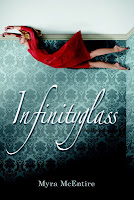If you read my post on writing craft books yesterday, you
know I have a slight addiction problem. It’s so huge, that I had to split the
post in two. Here’s the second part!
Audible Recs
Since I started writing, I’ve found the easiest way for me
to actually enjoy a book is to listen to it. Audible’s met that need for me.
They have craft books, but they also have workshops. Two of my favorites are:
Screenwriting for
Hollywood by Michael Hauge
This covers basics like character development story
structure (which differs from Blake Snyder and Save the Cat but just by a
smidge), but the most valuable and provoking part for me involved the ways to
illicit emotion from the viewer (or reader). I listen to this one repeatedly.
The Hero’s Two
Journeys by Michael Hague and
Christopher Vogler
A new favorite. Not only do we learn about the outer journey
a protagonist needs to take, including character arc and a fast, tight plot, we
learn about the hero’s inner journey. Emotion is what connects readers with
characters, and this workshop helps the writer connect with the deeper psyche
of a main character.
Writer Mental Health
Recs
The War of Art by
Steven Pressfield
Stephen Pressfield is bossy. No, really.
He’s not going to take any excuses, and he’s not going to
let you make them, either. Fear is not an option, and neither are any other
barriers to creativity: procrastination, self-doubt, or laziness.
After you finish this book, you WILL feel like a writing
ninja. Just be careful with that sword.
The Creative Habit by
Twyla Tharp
“In order to be creative, you have to know how to prepare to
be creative.”
Twyla Tharp is a dancer/choreographer, yes, but don’t let
that dissuade you. We all get creatively blocked, whether we’re dancers,
painters, writers, or musicians. There’s a definite “show up and do the work”
attitude throughout this book, and there are exercises to help. Discipline is
key, according to Tharp, and her work ethic reminds me of:
“Sister Mary Responsibility kicks the muse’s ass every
time.” – Nora Roberts
The Craft Books I’m
Reading Now
Fire in Fiction by Donald
Maass
The things I have been promised by champions of this
book:
How to capture emotional depth, create living, breathing
characters readers care about, turn magic real, and create a compelling voice.
I’m chasing down emotion and how to pull it out of a
character and when I find out how to make it happen I’m going to club it and
drag it back to my office by its hair.
Progressive, I know.
The Anatomy of Story:
22 Steps to Becoming a Master Storyteller by John Truby
Things I have been promised by champions of this book:
A lot of crying? I mean, a book like that shouldn’t fall
into the “Must Read” category for me, but allegedly the tears are worth it?
The skinny is that this book takes you deep inside your story and makes you acknowledge all the layers you have an opportunity to expose. Another book that focuses on character emotional growth, and gives suggestions such as, “come up with a list of every scene” to weave a tapestry, “figure out a web of symbols” to communicate different aspects of the story, etc.
It sounds cerebral and layered, and I hope it’s as
challenging as I’ve been promised!
Your turn! I want to know which craft books/helpers you love
and why. I always need a fix.

Myra McEntire is June's second Affiliate Blogger. To find out more about our guest author positions here at the League, click here.
Myra McEntire knows the words to every R&B hit of the last decade, but since she lives in Nashville, the country music capital of America, her lyrical talents go sadly unappreciated. She’s chosen, instead, to channel her “mad word skills” into creating stories.
She’s an avid Doctor Who fan and will argue passionately about which incarnation is the best.

Hourglass
Timepiece
Infinityglass
by Myra McEntire
For seventeen-year-old Emerson Cole, life is about seeing what isn't there: swooning Southern Belles; soldiers long forgotten; a haunting jazz trio that vanishes in an instant. Plagued by phantoms since her parents' death, she just wants the apparitions to stop so she can be normal. She's tried everything, but the visions keep coming back.
So when her well-meaning brother brings in a consultant from a secretive organization called the Hourglass, Emerson's willing to try one last cure. But meeting Michael Weaver may not only change her future, it may also change her past.
Who is this dark, mysterious, sympathetic guy, barely older than Emerson herself, who seems to believe every crazy word she says? Why does an electric charge seem to run through the room whenever he's around? And why is he so insistent that he needs her help to prevent a death that never should've happened?







.jpg)
























